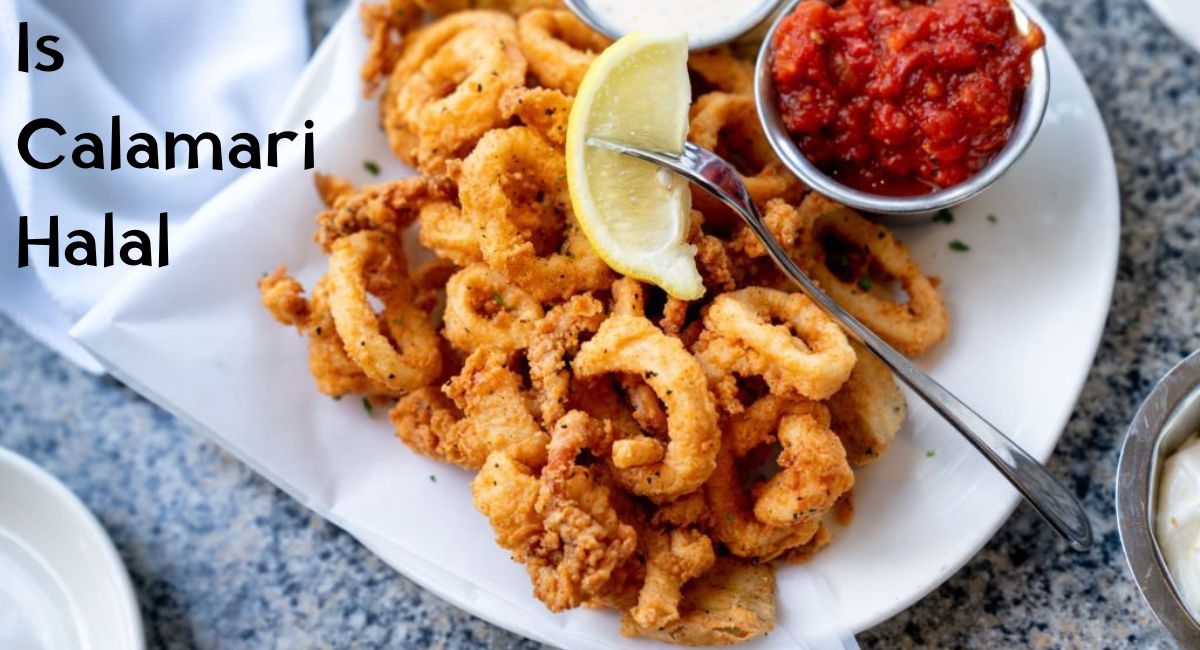Calamari, which refers to the dish made from squid, is a popular seafood delicacy enjoyed by many people around the world. However, when it comes to dietary considerations, such as adhering to specific religious dietary laws, questions may arise about whether calamari is halal.
To determine whether calamari is halal, it is necessary to examine the source of the squid and the method of preparation, as well as any potential issues related to ingredients and processing. Understanding these factors is crucial for individuals seeking to make informed decisions regarding their dietary choices within the framework of halal consumption.
What is Calamari
The history of calamari as a popular food item is rooted in Mediterranean cuisine, particularly in Italy and Spain. The word “calamari” itself comes from “calamaro” – the Italian word for squid. Squid has been consumed in many cultures for centuries, but its widespread popularity in North America and other parts of the world took some time to develop.
Historically, calamari has been a staple in Mediterranean cuisine, where squid is incorporated into various dishes such as paella, risotto, soups, and pasta. In Portugal, grilled whole kebabs of squid rings with bell peppers and onions, known as “lulas,” are a popular choice. Italian and Spanish cooks also utilize squid in their culinary creations, including calamari with aioli in Spain and squid incorporated into different Mediterranean recipes.
The widespread popularity of calamari in North America began in the 1970s. Prior to that, squid caught by fishermen on the eastern seaboard of the United States was primarily used as bait. The shift occurred when Italian restaurants started introducing calamari as a prominent dish, leading to its inclusion in the appetizer sections of menus across a wide range of establishments.
Since then, fried calamari has become a beloved appetizer in North America, often served with dipping sauces like marinara or tartar sauce.
Calamari has also gained popularity across Asia, where it is prepared in various ways. In many Asian countries such as China, Thailand, Japan, and Taiwan, squid is often grilled whole and sold at food stalls and stands. It is also used in sushi, sashimi, tempura, and other Asian dishes.
Types of Calamari

There are different types of calamari based on the species of squid used. Here are some examples:
- Atlantic Squid: Also known as Loligo squid, this species is found in the Atlantic Ocean and is commonly used for calamari dishes. It has a mild taste with slight sweet notes and a meaty texture.
- Japanese Flying Squid: This species of squid, scientifically known as Todarodes pacificus, is highly valued in Japanese cuisine and is often used for making calamari. It is described as having a sweet flavor and a pleasantly chewy texture.
- Humboldt Squid: Also called jumbo squid or red devil squid, Humboldt squid (Dosidicus gigas) is a large species found in the eastern Pacific Ocean. It is known for its aggressive behavior and is sometimes used for calamari preparations. When it comes to the taste of Humboldt squid, it is generally described as having a soft, moist, and clean flavor.
- Argentine Short Fin Squid: This squid species, scientifically known as Illex argentinus, is commonly found in the southwestern Atlantic Ocean. It is a commercially important species and is used in calamari dishes. The squid’s meat is delicate, tender, and has a natural sweet flavor. It is highly regarded by seafood lovers and chefs for its taste and outstanding texture.
- Indian Squid: Indian squid (Loligo duvaucelii) is a species of squid found in the Indian Ocean. It is widely used in Indian and Asian cuisines, including calamari preparations. It is described as tender and having a meaty, fishy flavor. Its mild taste with sweet notes is often compared to the meatiness of lobster or shrimp.
- Sustainable Squid (Doryteuthis pealeii): Sustainable squid, also known as longfin inshore squid, is a type of squid that is suitable for calamari preparations. It is valued for its tenderness. It has a tender texture and a mild, slightly sweet flavor.
- Southern Calamari (Sepioteuthis australis): This species of squid is commonly caught by anglers and has mottled purpley-brown skin with long, rounded side fins. It is available wild-caught and is often used for calamari dishes. In terms of taste, Southern Calamari is highly regarded and is considered a delicacy. It has a mild and sweet flavor, making it a popular choice for consumption.
- Northern Calamari (Sepioteuthis lessoniana): Another wild-caught marine cephalopod, the northern calamari has thick, dark browny-green bodies with long side fins. It is commonly used in calamari preparations. Northern Calamari is known for its mild flavor and a slightly sweet and briny taste. It has a firm and chewy texture that becomes tender when cooked properly.
These are just a few examples of the different types of squid that can be used to make calamari dishes. The choice of squid species may vary based on availability, flavor, and texture preferences. It’s important to use fresh squid for the best results when preparing calamari.
Calamari Vs Squid
Calamari and squid are often used interchangeably, but there are some subtle differences between the two terms.
Calamari is the Italian word for squid, and it has become synonymous with squid in English-speaking countries. In culinary contexts, calamari typically refers to the meat of squid prepared as a dish. It is commonly associated with deep-fried squid rings, known as calamari fritti, which is a popular appetizer in Western countries, including the United States.
On the other hand, Squid is a general term used to describe the animal itself, which belongs to the cephalopod family. There are various species of squid, including Nototodarus gouldi and Teuthoidea. Squid can differ in size, shape, and texture depending on the species. When referring to squid in a culinary context, it can encompass different preparations and cooking methods beyond just fried calamari.
Key Differences
- Terminology: Calamari specifically refers to squid prepared as a dish, while squid is a broader term encompassing the animal itself.
- Culinary Use: Calamari is often associated with deep-fried squid rings, while squid can be prepared in various ways, such as grilling, sautéing, or including it in pasta dishes, soups, and stews.
- Size and Texture: Calamari is generally smaller and more tender, while squid can be larger and tougher.
- Fins: Squid typically has fins that form an arrow shape at the end of the hood, while calamari’s fins extend almost all the way down the hood.
- Popular Perception: In the United States, calamari is more commonly used to refer to the fried squid appetizer, while squid has a broader connotation.
It’s important to note that the terms calamari and squid can be used differently in various regions and culinary contexts. However, in general, calamari is a specific preparation of squid, often associated with the popular fried squid rings dish.
Is Calamari Halal
The issue of whether calamari is halal or not has been a topic of debate among Muslims for many years. Some believe that calamari is halal, while others contend that it is haram.
In general, Muslims are allowed to eat seafood, but there are a few exceptions to this rule. For example, in the Hanafi school of thought, fish is the only seafood that is considered to be halal. Therefore, according to this perspective, calamari would not be allowed.
However, there are different interpretations within the Hanafi school, and some scholars believe that calamari is permissible to consume.
On the other hand, in the majority view of the Sunni schools of law (Shafi, Maliki, and Hanbali), calamari is considered to be halal. This is because it is a type of seafood, and seafood is generally permissible to eat in Islamic dietary laws.
However, the issue is not that straightforward. There are some particular conditions to be fulfilled to consider calamari as halal.
Firstly, calamari must be sourced from a halal source. This means that the calamari must have been caught, harvested, or raised in a way that is consistent with Islamic dietary laws. If there is any doubt about the source of the calamari, it is always best to avoid it.
Secondly, calamari must be prepared in accordance with Islamic dietary laws. It should not be prepared with any haram ingredients or cooked using haram methods. For example, if it is cooked in wine or with pork products, it will not be considered halal.
Finally, the issue of cross-contamination is also pertinent. If calamari is prepared in a restaurant or facility that also serves non-halal food, there is a risk of cross-contamination. This means that the calamari could come into contact with non-halal food, which would make it haram.
In conclusion, the permissibility of calamari under Islamic dietary laws is a matter of debate among scholars. While the Hanafi school of thought considers it haram, the majority view of the Sunni schools of law is that calamari is halal. However, it is important to ensure that the calamari is sourced from a halal source, prepared in accordance with Islamic dietary laws and not cross-contaminated. It is advisable to consult with a knowledgeable Islamic scholar or a qualified authority on Islamic dietary laws to obtain a personalized and accurate answer based on one’s specific circumstances and beliefs.
Health Benefits and Nutritional Benefits of Calamari
Calamari, which is the culinary name for squid, offers several health benefits and is a nutritious seafood option. Here are some of the health benefits and nutritional benefits of calamari:
- Nutritional Profile: Calamari is an excellent source of nutrients. It is low in calories and fat, making it a healthy addition to any diet. It is also a good source of protein and contains essential vitamins and minerals such as vitamin B6, vitamin B12, iron, zinc, phosphorus, copper, and potassium.
- Protein Source: Calamari is rich in high-quality protein, which is essential for building and repairing tissues, supporting muscle health, and promoting satiety.
- Omega-3 Fatty Acids: Calamari contains omega-3 fatty acids, which are beneficial for heart health and have anti-inflammatory properties. These fatty acids play a crucial role in reducing the risk of heart disease and supporting brain health.
- Vitamin and Mineral Content: Calamari is a good source of various vitamins and minerals. It contains vitamin B6 and B12, which are important for energy production, nerve function, and the formation of red blood cells. It also provides minerals like iron, which is necessary for oxygen transport in the body, and potassium, which supports heart health and regulates blood pressure.
- Low in Calories and Fat: Calamari is a low-calorie and low-fat food option, making it suitable for individuals watching their weight or looking for healthier alternatives to high-fat foods.
It’s worth noting that when enjoying calamari, the cooking method and accompanying ingredients can impact its overall nutritional value. For example, fried calamari may have higher calorie content due to the breading and frying process, so it’s important to consider healthier cooking methods like grilling or steaming to retain its nutritional benefits.
How to Cook and Eat Calamari
Cooking and eating calamari can be a delightful experience, whether enjoyed at home or in a restaurant. Here are some guidelines on how to cook and eat calamari:
- Cooking Methods: Calamari can be prepared using various cooking methods, including frying, sautéing, grilling, braising, and even enjoying it raw. One popular way to cook calamari is to deep-fry it, often served as battered and breaded rings. However, calamari can also be sautéed with chilis and garlic for a healthier option, braised with tomatoes and olives for a flavorful dish, or marinated and grilled as calamari steaks. The cooking method you choose will depend on your personal preference and desired flavors.
- Slicing and Cleaning: Before cooking calamari, it is important to clean and prepare it properly. Start by slicing the squid into thin rings or cutting it into steaks, depending on your recipe. If using whole squid, remove the head by gently pulling it out from the mantle. Cleaning calamari involves removing the internal organs, beak, and skin. Rinse the squid thoroughly under cold water and pat it dry before proceeding with the chosen recipe.
- Flavoring and Marinating: Calamari has a mild flavor that easily absorbs the flavors of marinades and seasonings. Consider marinating calamari steaks or rings in your choice of herbs, spices, citrus juice, or olive oil to enhance their taste. Allow the calamari to marinate for at least 30 minutes or up to a few hours to maximize flavor infusion.
- Serving Suggestions: Once cooked, calamari can be served in various ways. It is commonly enjoyed as an appetizer, accompanied by lemon wedges and a dipping sauce such as aioli or marinara. Calamari can also be incorporated into main courses, such as pasta dishes, risottos, salads, or seafood stews. Additionally, calamari pairs well with side dishes like baked fries, Thai green papaya salad, jambalaya, or creamy potato salad. Be creative and explore different culinary combinations to complement the unique flavors and textures of calamari.
- Etiquette: When it comes to eating calamari, there are no strict rules. However, it is generally enjoyed using utensils, such as a fork or chopsticks, to pick up the rings or slices. Dip the calamari in the accompanying sauce or squeeze lemon juice over it for added zest. Enjoy the calamari slowly, savoring the tender texture and flavors. Remember to be mindful of any bones or beaks that may be present in the calamari and remove them before eating.
Remember to refer to specific recipes and cooking instructions for detailed step-by-step guidance on cooking calamari. With these guidelines in mind, you can confidently cook calamari at home and create delicious dishes to enjoy with family and friends.






